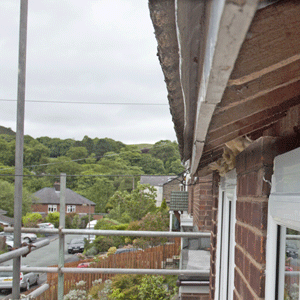 |
Diary of a dissatisfied customer | ||||||||||
Thermography (Thermography Results and Endoscope Results)
|
|||||||||||
This section is divided into two parts. The same principle is used as seen in the problem section where each additional page links back only to this main page. Organisation of the pages is as follows:
|
|||||||||||
|
|||||||||||
|
|||||||||||
You can hire thermographic equipment but you also need to hire expertise unless you happen to have experience, which I certainly do not. For an external survey it is clear from speaking to several experts on the subject that there needs to be a temperature differential between internal areas and the external air. A subject I will be discussing elsewhere in due course, not connected with this saga or to use a more appropriate expression coined by a journalist recently, industrialised deceit.
Thermography for assessing CWI demands the following:
That will usually mean an early start on the day for which the householder needs to be equally prepared, long before the survey date and on the survey date. The following is a must:
I am fortunate that my wet central heating strategy employs radiators on internal walls, a long way from external walls. Leaving the radiators on cannot distort temperatures detected on any area of wall. It should be remembered that my cavity wall insulation was installed a long time before I discovered a serious void. It never occurred to me there might be any cause for concern. Given the void has no obvious cause, which I am well qualified to judge, I decided to investigate. I would not encourage anyone to invest in thermography, which is not ordinarily cheap, unless they have good information to suggest there is a problem such as voids. If there are issues, contact the installation company first but keep everything in writing no matter what the pressure to agree to meetings. If you really must have meetings record them, but tell them you will do so. If you feel vulnerable have someone else present, then there is less chance of harrassment and bullying that you must assume will be inevitable. Do not use the telephone under any circumstances unless you have recording apparatus like my truecall (Note 2) system. Assume the people working for these companies are desperately trying to impress their line-managers, not customers. Bullying is often endemic within large organisations as well and that can rub off. Arm's length management is the order of the day. That said, there may be other options for detecting a CWI problem initially. Details possibly applicable to others may be found on the Endoscope random images page of this section. The techniques involved include intrusive surveys so again, unless you have genuine reason to be concerned, I could not suggest damaging your property in the process. I know one Chartered Surveyor who has said he believes blown-in mineral-wool CWI can 'settle' because he invariable notes the absence of cavity fill at eaves level when working on buildings alleged to have had CWI. I do not agree. The mineral-wool is far too light and fluffy, the cavity too narrow, the fricton too great and there is an absence of movement of the structure. Different of course for an economy size pack of washing powder which is heavy, the cavity (box) wide, the friction negligible and with all the movement, the contents rapidly settle. The box expands at the waist slightly each time it is put down: If the mineral-wool is absent then you can safely assume it was never there. |
|||||||||||
|
|||||||||||
NB: This page was edited 24.02.2013. There were three parts proposed to this section but only two have proved necessary. The proposed third part has been deleted as the subject matter has been resolved in the second part. |
|||||||||||
|
|||||||||||
